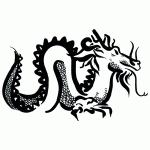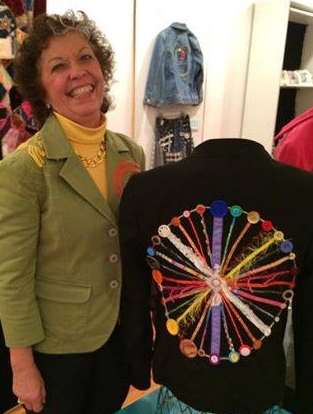Free Special Report
by
Sharon M. Barnes, MSSW, LCSW
Therapist for Sensitive and Gifted
Top Five Tips for Taming the CASIGY™* Mayhem-Monster
 Is Your House Haunted by the Mayhem Monster? Many kids, especially those who are Gifted, Creative, Highly Sensitive or with ADD or AD/HD feel the need to stimulate their brains. For lack of better methods, they create chaos & crisis. Voila! The Mayhem Monster is born and grows bigger each time it’s activated.
Is Your House Haunted by the Mayhem Monster? Many kids, especially those who are Gifted, Creative, Highly Sensitive or with ADD or AD/HD feel the need to stimulate their brains. For lack of better methods, they create chaos & crisis. Voila! The Mayhem Monster is born and grows bigger each time it’s activated.
Unfortunately, the Mayhem Monster wreaks havoc on family harmony, homework assignments, friendships, and life in general. Once it takes over, even the best of parents can feel helpless to get rid of it. But the Mayhem Monster does not have to rule the roost.
Creative, Complex, Sensitive, Intense, Introverted, Gifted kids and teens, AKA CASIGY™s (pronounced ka-síg-ē) sometimes get diagnosed with ADD or AD/HD when they don’t have it. Why? Because they often have difficulty paying attention, need a high level of stimulation, and also get over-stimulated easily. Hmmm. May be they DO have ADD. Maybe not. Can they pay attention when something interests them? Then they don’t have ADD. Can they attend to something for hours if it fascinates them? That’s not ADD. Is it hard to find something stimulating and engaging enough to interest them? That’s consistent with giftedness. Do they REFUSE to attend to something unless it’s relevant? You just might have a CASIGY™ on your hands.
It’s not surprising that CASIGY™s get mislabeled with AD/HD or ADD. AD/HD and ADD are the most common childhood mental disorders, and the most rapidly growing ones in adults. ADD is often first noticed at school for kids and at work for adults. It is characterized by inattention, and sometimes also impulsiveness and/or hyperactivity. CASIGY™s are Creative, Sensitive, Intense, Gifted folks who are often diagnosed with ADD or AD/HD even when they don’t because their stimulation and attention issues are so similar.
What can a parent do to help their teen or child with need for high stimulation, yet simultaneously easily over-stimulated???
Here are Sharon’s Top Five Tips for Taming the Mayhem Monster:
1. First, Acknowledge the presence of the Mayhem Monster. Name it, for yourself and for your kids and teens. Remember Pete’s Dragon? There’s an old children’s story about a pre-school age boy named Pete who woke up one morning with a tiny dragon sitting on the foot of his bed. As the story goes, both Pete and his mother ignored the dragon, (since there’s No Such Thing as a dragon). It got bigger and bigger with each incidence of being ignored. Only after it got so big that it carried the house off the foundation on its back and was directly addressed and named, did the dragon shrink back down to a manageable size. Pete and his dragon can help us remember that when you name the dragon, it’s no longer in charge, You are.
2. Acquaint your kids and teens with the Mayhem Monster. Many Creative, Aware, Sensitive, Intense and/or Gifted teen and kids with ADD or AD/HD are Visual-spatial and/or Kinesthetic Learners: they learn by seeing or doing. This means that it’s essential to let them see and experience the results of, and clean up the messes of, the Mayhem Monster.
a. Don’t protect your kids and teens from the negative effects of the Mayhem Monster. When you get out of the way of life’s natural consequences and let them happen naturally, you facilitate the most effective, the easiest (for you) and best kind of Life Skill Development for your kids and teens. Remember to be empathetic and kind toward them while at the same time stepping out of Life’s way and allowing negative consequences to happen Yes, this works with any kids, but with CASIGYs™, it’s absolutely crucial.
b. If natural life consequences are not available, then it’s up to you, the parent, to create  consequences connected to what the Mayhem Monster has done. The connection should ideally be obvious or at least logical. The consequence should also be in proportion to the problem. If the mess is a 10, the consequence should be a 10. If the mess is a 2, the consequence should be a 2. The size and importance is the mess is the indicator, not your level of hurt or anger about it. Also like rewards, consequences need to be internally motivating to each child. This can be even more challenging to keep up with than the rewards are. You’ll know by your kid’s reaction if you’ve hit the nail on the head or missed the mark. If it’s no big deal, let that one go and search for a new one. If it motivates them to manage their behavior better next time, you’re on to something.
consequences connected to what the Mayhem Monster has done. The connection should ideally be obvious or at least logical. The consequence should also be in proportion to the problem. If the mess is a 10, the consequence should be a 10. If the mess is a 2, the consequence should be a 2. The size and importance is the mess is the indicator, not your level of hurt or anger about it. Also like rewards, consequences need to be internally motivating to each child. This can be even more challenging to keep up with than the rewards are. You’ll know by your kid’s reaction if you’ve hit the nail on the head or missed the mark. If it’s no big deal, let that one go and search for a new one. If it motivates them to manage their behavior better next time, you’re on to something.
c. The person who owns the problem needs to be the one who solves it. Whose problem is it that the child wasn’t paying attention when the homework instructions were given? Really? Is it YOUR problem? Are you going to be the one answering to the teacher tomorrow? You, the parent, become a consultant to the person with the problem, the child or teen. As a consultant, you make pertinent observations and sometimes offer ideas or suggestions if your child or teen doesn’t come up with any good ones themselves. It’s a good practice to always start with ridiculous ones first. This adds some humor to the situation and gives them a chance to shoot down your ideas. It also enables them to reject some of your ideas, which opens and activates their minds to the ideas that that actually might work. It also takes you out of the role of the “ever-present-problem solver”.
3. Find a fun, metaphorical way to put that Mayhem Monster back in its cage, or at least to put a leash on it. Better yet, preempt it. YOU be in charge of the stimulation. You direct and channel it. Make it worthwhile for the Mayhem Monster to stay confined in its cage, or at least on its leash─whichever one you decide is best at this moment.
a. First and foremost: Notice & reward the behavior you like and want more of. The principle here  is: “What gets noticed; increases”. Talk about it, celebrate it, and pay attention to it in many ways. A word of praise, a pat on the back; get creative in your attention and appreciation of positive behavior. If this has been missing, and behavior has deteriorated, you may have to look hard and find tiny subtle things to compliment. If you keep it up, you’ll be surprised how quickly there will be bigger, better things to complement.
is: “What gets noticed; increases”. Talk about it, celebrate it, and pay attention to it in many ways. A word of praise, a pat on the back; get creative in your attention and appreciation of positive behavior. If this has been missing, and behavior has deteriorated, you may have to look hard and find tiny subtle things to compliment. If you keep it up, you’ll be surprised how quickly there will be bigger, better things to complement.
b. Make the rewards for calm, peaceful behavior very exciting. This is especially important for CASIGY™ kids and teens. When you do this, it prevents the need for the Mayhem Monster to create the stimulation. It also creates a subliminal connection between the calm, peaceful behavior and the stimulation of the rewards.
c. Tailor the stimulating reward so it’s worth your child’s effort to manage the Mayhem Monster  themselves. You don’t have to spend a fortune or take lots of time. What’s necessary is attune to each child’s specific ‘hot buttons’. You can reward them with time playing specific computer or video games, outdoor activities, face-to-face time with you or your partner (doing something this child considers fun), phone time, having a friend over, etc. If a reward becomes ineffective, then drop it. It has to be internally magnetic to the child, or it’s not worth the trouble for them or for you.
themselves. You don’t have to spend a fortune or take lots of time. What’s necessary is attune to each child’s specific ‘hot buttons’. You can reward them with time playing specific computer or video games, outdoor activities, face-to-face time with you or your partner (doing something this child considers fun), phone time, having a friend over, etc. If a reward becomes ineffective, then drop it. It has to be internally magnetic to the child, or it’s not worth the trouble for them or for you.
d. What makes your kids eyes light up? That becomes the reward for getting home chores and “homework” done, as long as it’s in proportion to the task and affordable/reasonable in time, energy and money. (Who thought up the label ‘homework’, anyway? “Schoolwork sent home for parents to supervise” would be more accurate).
e. What if chores/school work/tasks given in negative consequences don’t get done? Then even  more dreaded (relevant, necessary to life) tasks magically appear to provide external motivation when there is none internally. You might even enlist your kids or teens ahead of time in devising both rewards and consequences for the Mayhem Monster.
more dreaded (relevant, necessary to life) tasks magically appear to provide external motivation when there is none internally. You might even enlist your kids or teens ahead of time in devising both rewards and consequences for the Mayhem Monster.
f. Here’s an ‘aside’: if the school continually assigns irrelevant, repetitive, or rote memory work, then a CASIGY™ parent might want to advocate for the learning needs of their CASIGY™ child or teen. There are also consultants and advocates who are available to assist parents in obtaining accommodation to the child or teen’s needs. And if that perpetually becomes unworkable or impossible, at last resort, consider changing schools.
4. Don’t bother doing any of this unless you’re up for going toe to toe with your kids and teens. Your own kids and teens know your vulnerabilities and your weaknesses and will take full advantage of them at the worst possible times. They know when you’re down in the dumps or exhausted and don’t have the energy to follow through on anything. That’s the precise moment when they will challenge and test you to the limit. They will play on your sympathies and your sensitivities to the max.
a. Remember that consequences for them are often also consequences for you, especially if you don’t include their reaction to the consequences in their consequences. So don’t start anything that is not “on a hill that’s worth dying on” metaphorically speaking. And don’t start anything about which you and your spouse or parenting partner, if you have one, disagrees with you. Pare this down to the bare bones, and go with that. Banish your idealistic notions of what a family “should be’ and go with only what is absolutely essential.
b. Get help with this if the Monster is in full control and you know that you don’t have the strength or tenacity to make these changes. Enlist a friend or family member who has successfully navigated this treacherous territory and has tamed the Mayhem Monster in their own house. You could also consider taking a parenting class, or see a therapist who’s familiar with the Mayhem Monster and knows how help parents tame it. (Click here if you’d like to discuss how I might help you).
5. Recognize that stimulation and attention are body-mind issues that need to be dealt with on both levels. A CASIGY™ brain and an ADD brain often need help to function normally. Help your kids with ADD & AD/HD and your creative, acutely aware, highly sensitive, intense, and gifted kids with attention issues to balance their brains. Provide healthy, ways to stimulate their brains. If you don’t, they’ll invite the Mayhem Monster to do it for them. Here’s a start:
a. Vigorous physical exercise, and active chores get the blood flowing. This supplies the brain with more oxygen, making it easier to focus and think. Intersperse physical and mental activities for optimum results. Here’s an extra tip: Never take away recess or physical activities as a consequence for negative behavior with creative, sensitive, intense kids and teens, and especially those with AD/HD or ADD; it only make the problem worse. Instead, take away TV or computer time and assign them additional (preferably unpleasant) physical tasks as negative consequences.
b. Pay close attention to nutrition. Always feed them balanced meals with
i. low glycemic foods,
ii. complex carbohydrates and
iii. include protein in every meal or snack
iv. Avoid processed foods as much as possible, as kids with AD/HD and ADD and creative, highly sensitive and gifted kids with attention issues seem to have more allergies than many others.
v. Give them (and you) healthy snacks such as carrots and nuts; an apple and cheese; celery and peanut butter.
vi. Many kids (and adults) with AD/HD also do better with smaller meals and snacks in between, so they are eating something every two to three hours, thus keeping their blood sugar levels balanced, too.
vii. There’s also more and more evidence piling up that the usual food additives and pesticides in the processed, fast food Standard American Diet (SAD) make life worse for CASIGYs™. So go organic and unprocessed as often as possible.
viii. More and more CASIGYs™ are also discovering that eating at least gluten free, and even grain free also improves both their brain and body function.
c. Use medication and/or or supplements when needed, and when the above lifestyle treatments aren’t enough. Both medications and supplements have been proven to make a significant difference in brain function for kids with AD/HD and ADD and CASIGYs™ with attention issues. If brain function is impaired or unbalanced, it’s like expecting a diabetic to function well without insulin or a car to run without quality gas in the tank or oil in the engine. Don’t be afraid to use medications or supplements when they’re needed for kids with AD/HD and ADD and creative, aware, super-sensitive and gifted kids with attention issues. If these are clearly out of the question for you, then be vigilant with the lifestyle changes required to help your CASIGY™ kids or teens keep the Mayhem Monster under their control.
I hope you’ve enjoyed reading these tips and tools, and even more, I hope that you found some worth using.
Would you please be willing to give me your feedback?
- Which tools did you try out?
- Which tools did you find most helpful?
- Was there something missing-something that bugs you about this topic that isn’t clear or that I didn’t address? Please let me know what it is!
- Do you have a question that was raised as you read this report?
You can email me or phone me at 303-987-0346 and I’ll be happy to connect.
Thanks for requesting this Free Report from ScrapLady Sharon Barnes, Therapist for Sensitive and Gifted, and the Academy of Creative Living. We look forward to continuing to help YOU as a CASIGY™ thrive, heal, become fully alive and fulfill your destiny.
Creatively,
Sharon M. Barnes, MSSW, LCSW
Creative Transformation Specialist
AKA The Scrap Lady
I Help CASIGYs™ Find Beauty & Benefit in Life’s Scraps.
www.TherapistForSensitiveAndGifted.com
8089 South Lincoln Street
Littleton, CO 80122
Phone: 303-987-0346
Call or Click Today for a New Tomorrow!
*CASIGY™ = Creative, Acutely Aware, Super-Sensitive, Intense, and/or Gifted You?

